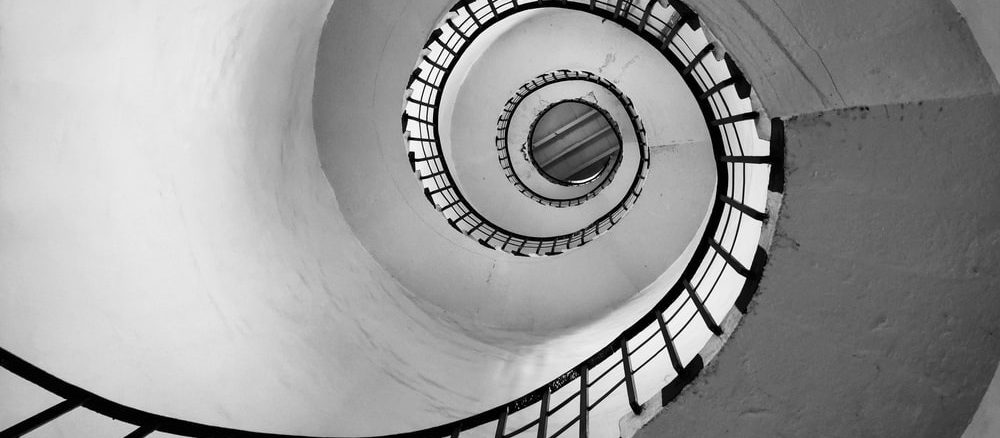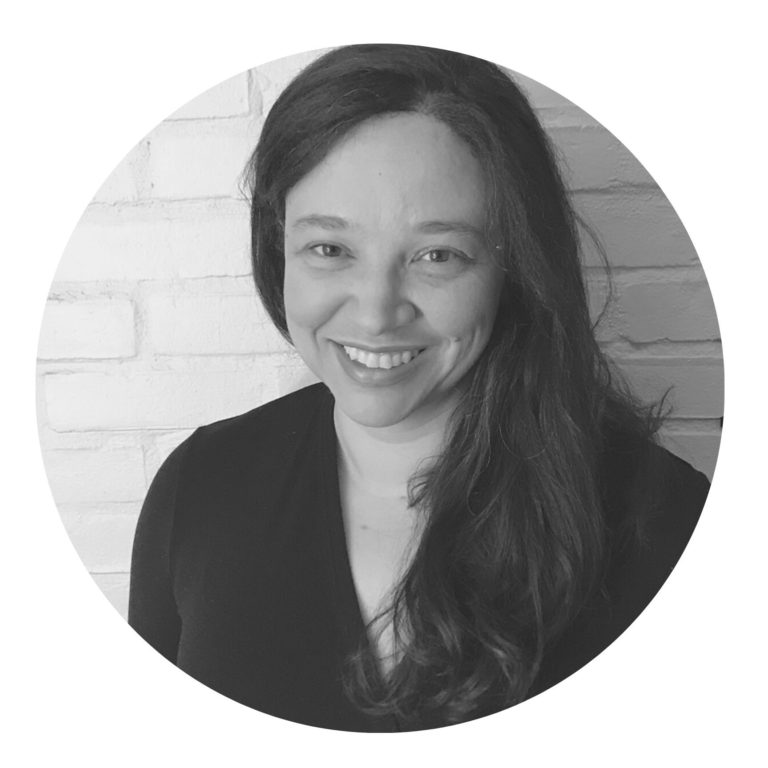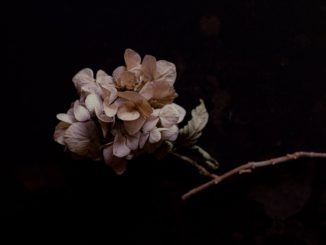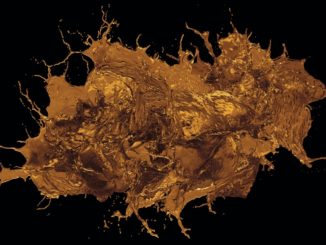
In 1994, my twin sister and I entered separate high schools — after years of being “the twins” we were ready for independence. She enrolled in one of the many Catholic schools outside the city and I entered our public high school alone. In my freshman year, I remember there being maybe five or six biracial kids in my class of more than two hundred students. That felt like a revelation. Where have you all been? I wondered. Although interracial marriage had been legal in the United States for more than a decade when my sister and I were born in 1980, interracial couples made up just 3.2% of married couples nationwide. So often it had seemed as though my sister and I stood alone against a binary world.
I remember being told in eighth grade that I was not black and not white, I was “confused.” I was fortunate to grow up in a liberal place where, by high school, there was a remarkable amount of social fluidity when it came to race, but my feeling about being biracial in my adolescence was that there was a choice to make: are you “more” Black, or “more” White? My peers looked to my style and tastes to categorize me: Did I listen to the Fugees or the Indigo Girls? (answer: both, with a preference for the Fugees). Was I preppy or did I wear Timberland boots and baggy jeans? (answer: both, with a preference for preppy).
Since 2000, the census has allowed respondents to “mark one or more races” (itself a decision that required much discussion and debate: is it best to add a multiracial box? “Check all that apply”?). College applications have followed suit, unlike the 1998 common application that forced me to report “Black” and deny my mother and the family that raised me or “White” and deny my experiences in racial liminality. I checked one box in the computer program, printed it out, and marked the other with pen.
One evening, as admissions decisions began to roll in, I sat in the kitchen with our wall phone pressed to my ear, listening to the (White) chair of the history department at a small liberal arts college tell me he was calling to recruit me because I was a “promising Black woman.” I looked over at my White mom, who had raised my sister and me on her own. In my memory she is framed by soft light, hunched over the sink with her arms deep in dishes. “I’m mixed,” I told him. His response was to laugh. “Oh, fine if you want to call yourself that,” he said. “But according to history and to society, there’s no such thing.”
Mom had certain requirements for our college applications: we must not apply blindly, and we must visit after we were admitted. Visiting colleges, I saw myself through the institution’s eyes. What made me stand out to them was the lens through which they formulated my experiences on campus — and often the salient point about me was my race. At the small liberal arts college that had recruited me by phone, I was paired during my on-campus visit with a Black woman studying religion as my host. “Well,” the history department chair explained, “she was the closest one I could find to history.” I assumed that meant there were no Black women history majors but he found someone who was studying the humanities to take me around.
My host lived in the Black student center; had the history professor bothered to ask, I would have said I was interested in experiencing the dorms, but he never did. While at the center, I met a set of twins — also Black women and first-years at the college — who shared their experiences and took me to see the dorms, which I loved. At breakfast the next morning, my host encouraged me to introduce myself to some of the White students on campus, who were by far the majority. “I don’t have any White friends here,” she said. “But you probably should hear from them.”
At the end of my visit, I happened to run into the history department chair again. He asked about my experience and I mentioned meeting the first-year twins and seeing the dorms, and how much I enjoyed the history seminar I attended. “Oh, good!” he said. “And I have a funny story about those twins.” As a twin myself, I braced for a typical story of mistaken identity. I expected to do as I always did, to nod and smile and make him feel better for mixing them up. “Of course,” I would say. “It happens all the time.” Except that as a twin, you are still your own independent human, and it is as weird for me that there is someone who looks so much like me that a viewer could assume we were the same person as it is for you, the viewer, to see the same face on two different people. For anyone who has ever wondered what it is like to be a twin: here it is.
Apparently, one of the twins was in his seminar, but he didn’t know there were “two of them” (for the record, there was only this one person, in his seminar, and she had a twin sister). He had decided on an impromptu class outside, and was trying to get the word out to his students. He happened to see the woman he thought was his student and quickly explained the change. But the professor’s tale had a twist. When “she” looked at him blankly, he explained that he had the “greatest fear of any white liberal…” (I waited for the punchline…). “You know, that they all look the same.” I had no language then for what I might now call a microaggression. I was grateful to see my grandparents’ van appear.
When visiting a large public university that had offered me a place in its honors program, I found myself in conversation with a (White) admissions officer. As I asked her details about the program, she answered me absent-mindedly then said, “Well, you can learn more about it when you come on campus. Once you’ve been here a semester you can apply.” I couldn’t figure out if my questions suggested that I hadn’t already been offered a spot, if my questions suggested I wasn’t smart enough to have been offered a spot already, or if she just assumed I wasn’t already admitted to the program by looking at me — or perhaps some combination.
At breakfast the next morning at a local restaurant, Mom and I waited for a host to seat us. Although we were the only two people in line and clearly in conversation, the (White) hostess asked if we were together. At the end of the meal, the (White) waitress asked if we wanted separate checks. Later I would learn that in the South, separate checks are much more common than up North, but I assumed I still looked like a kid sitting with a mom, which made the question ridiculous. All I could think as I left town was how much had been assumed about me, how much had been read into my appearance. Not to mention that the campus looked like a plantation and that by the university’s own account, slavery was central to its founding. This one was also off the list.
Our last visit was to an elite private university. During “pre-frosh weekend” the prospective first-years came together for a series of special events, and since my sister and I had both been admitted, we visited together. In the end, we both joined her host at an annual fashion show sponsored by the black students’ association on campus. This fashion show was the only place in all of my visitations where I saw interracial student couples. There were models of all colors on the runway and I felt a sense of ease and community that had been missing elsewhere. Of course, this view was slanted and the reality much more complex, but it was true enough to make me feel as though I could be myself there. That feeling of freedom made my college decision clear.
Perhaps being not only biracial but a biracial twin has heightened my awareness of the many moments in which my individuality and independence were stripped away based on my appearance. I have long been tired of being told who I was (“confused,” “Twin 1,” and so on). Recently, a White acquaintance who is now the father of biracial children published an essay online entitled “Biracial Does Not Exist.” In it, he muses about biracial identity in American society, and specifically the perceptions of his children. He comes to the conclusion that, “while American society does not have a space or a concept that allows for people to be ‘biracial,’ they can certainly be bi- or multi-ethnic… Their ethnicities are both chosen and hereditary, but their race is assigned: Black.”
As I read this final line, I felt as though I were back in my kitchen more than twenty years ago, listening to the White history professor tell me I could call myself anything I wanted to so long as I understood that society would assign me my race, that there was “no such thing” as being mixed. It was painful to me, as it may be to this person’s children, to deny or be expected to make invisible a part of myself and a family that loves me — experiences and inheritances that amount to culture, ethnicity, but also racial identity. The fact that race is a social construct suggests that those of us who are biracial can expand existing notions of race. I hope that, in the end, his children and others like us will feel empowered to claim the identity we choose.
Naomi Coquillon
Naomi Coquillon is a museum educator living in Maryland. Her writing has appeared in Museum magazine and the Journal of Museum Education among others.
Featured image: Artwork by Vishwasa Navada K on Unsplash.



